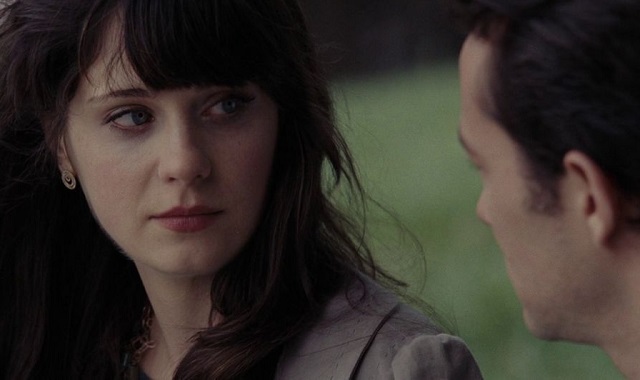
There is a collection of a few teachings from a great soul who lived, and was killed, during the Holocaust. There is not a teaching on every week's portion; therefore, I do not often get a chance to study from it. But Vayishlach is one portion in the collection, and I am excited to share the teaching with you.
Most of us know the story; Jacob, having lived many years with his father-in-law, Laban, receives a message from the Creator that it is time to go back to his parents' home. On his way, he finds out that his brother, Esau, is coming to do him harm and to probably kill him and his family. And so, Vayishlach begins with the phrase that states Jacob "sent angels." It is not often we find this terminology – literally, the word "angel" - in the Torah. There is a discussion among the commentators whether he sent literal angels, or if angels here simply mean messengers or people that Jacob sent. Rashi, the great kabbalist and commentator, says that Jacob actually called angels from the Heavens to go see and speak to the soldiers of Esau who were coming to kill him.
We know that all of these stories are not historical stories, but rather secrets and understandings we need today. So, what is the secret here? This teaching says we can understand this verse and the secret of the concept of Jacob sending actual angels as it pertains to our own spiritual work. What is the Creator's ultimate, greatest desire for us? What is it that the Light of the Creator truly desires for us and from us? Some of us might think it is the spiritual work, the prayers, the connections… but, this teaching says no; the ultimate, the most important thing that the Creator desires for us is not the spiritual work which we see as the spiritual actions, the study, or the connections. Rather, it is to have the ability to elevate physicality.
The kabbalists often speak about this. The soul does not have to descend into the physical world to do the spiritual work and actions of spiritual connection that can occur in the Upper Worlds, whether it is to pray, study, or even to share. The main focus of our work should not be the spiritual actions which can be done in the Upper Worlds as well, but rather to elevate the physical; this is the benefit of sending down the soul into the physical body, into the physical world.
So, first, he makes a very important statement for all of us to understand: the core of our work needs to not simply be the spiritual work as we see it in connections, study, prayer, or even actions of sharing, but rather, in the focus of elevating the physical. How do we do that? By injecting the Light of the Creator into all the physicality of this world.
To give an example, when a person is eating, the question is, why is he eating? If he eats because he simply wants to enjoy the physicality of eating, that is one type of consciousness. The other type of consciousness is, "I am eating this, or I am drinking this, or I am enjoying this, of the physical world, so that I can have a greater capacity and ability to connect to the Light of the Creator." When a person lives his life in this way, which means that in everything physical he partakes of, he understands and injects the consciousness that the reason he is enjoying this food, drink, or physical space he is in, is because he asked that all of it give him a greater ability of strength and happiness to be able to connect to the Light of the Creator, then that is the ultimate purpose of his spiritual work.
This understanding that the purpose of spiritual work is not actually the spiritual, but rather it is about the ability to inject all of physicality with the Light of the Creator, may be a shift for some of us. That is why we are in this world, because otherwise - and it is important to understand this - there would be no purpose to be here, because spiritual work can be done in the spiritual world. The purpose of being sent down into this world is so that we can inject the Light of the Creator into the physical. We do that through consciousness. We do that through consciously using and receiving the physical.
And he brings a teaching from the student of the Ba'al Shem Tov, the Maggid of Mezeritch. Every once in a while in the Zohar, there is a section that is poetic, but very difficult to understand. One of those sections is in the beginning of the Zohar, in Mishpatim, in section 15. There is a passage called Saba de Mishpatim, in which an old sage reveals the secrets of reincarnation. He talks about the work of this world, and ends with the phrase that says our work is to clothe the Shechinah, or what we call our mother, our protector, with beautiful things that “do not exist" or "do not have existence." That is the purpose of our work, the Saba de Mishpatim, the old sage reveals: to clothe, awaken, and prepare the beautiful things that do not have existence.
So, the Maggid of Mezeritch explains the secret of that section in the Zohar by telling us spiritual work has an existence, Light, and an essence; the Zohar has an essence whether we touch it or not. Prayers have an existence and have Light, whether we say them or not. Even actions of sharing, because they are connected to the Light of the Creator, have an existence separate from what we do with them.
But what does not have Light, or spiritual existence, without our injection is all that is of the physical world. Therefore, the purpose of our spiritual work in this world is not the spiritual actions, but through that consciousness, injecting the Light of the Creator into the physical of this world. So, when we understand that, we understand again a shift in the way we focus our day. We cannot think it is enough that we studied, connected, prayed, meditated, or even did actions of sharing; the question we have to ask ourselves is, "How much physicality did I elevate today? How much physicality did I invest and inject with the Light of the Creator?" How much, as the Saba de Mishpatim, the old sage, says are we taking physical things that did not have a great investment of the Light of the Creator in them and invested, through our consciousness, a great Light of the Creator in them and elevated them? That should be the real focus of our spiritual work.
When we do this, a beautiful thing happens. A person who is focused on this work, who most of the time when he is eating, drinking, or partaking of this physical world, is elevating the physical, through his consciousness to a connection with the Light of the Creator, elevates to the level of a righteous person.
People often make the mistake of thinking that being a spiritual person and being connected to the Creator comes through doing the spiritual work, but as we have just learned, that is not the point, because to do the spiritual work we do not have to be in this physical world. We can do all of the spiritual work in the Upper Worlds. There is only one reason we are in this physical world, and the ultimate purpose of our work is to elevate everything that is of this physical world – the food, the drink, the enjoyment, and so on. If we do that consistently and constantly, then eventually we elevate to the state of a righteous person.
And this is the secret of the phrase that begins the portion Vayishlach - “Jacob sent angels." Jacob lived his life with this understanding, consciousness, and focus; every time he ate, every time he drank, every time he enjoyed the physical, he had the consciousness of, "I am investing the Light of the Creator into this, and I want this enjoyment, this food, this physicality to give me the ability to connect even more strongly with the Light of the Creator." Therefore, he elevated those physical things into the level of what are called "angels," or spiritual entities, spiritual beings. Through this work, real angels, real spiritual energy, was invested and created into all of his physicality.
Jacob lived his life always investing the physical. We do not have to invest the spiritual with Light, because the spiritual has Light, the Zohar has Light, the prayers have Light, even actions of sharing have their essence and Light. What does not have Light and needs to be injected with the Light of the Creator in order to be given existence and be elevated is the physical. We need to take the physical and elevate it to a connection with the Light of the Creator, with the consciousness we’ve been talking about here. Mashiach, the end of pain, suffering, and death, will come not when more people are praying, studying, or even doing actions of sharing. It will happen when more and more people live with this consciousness and elevate the physical.






